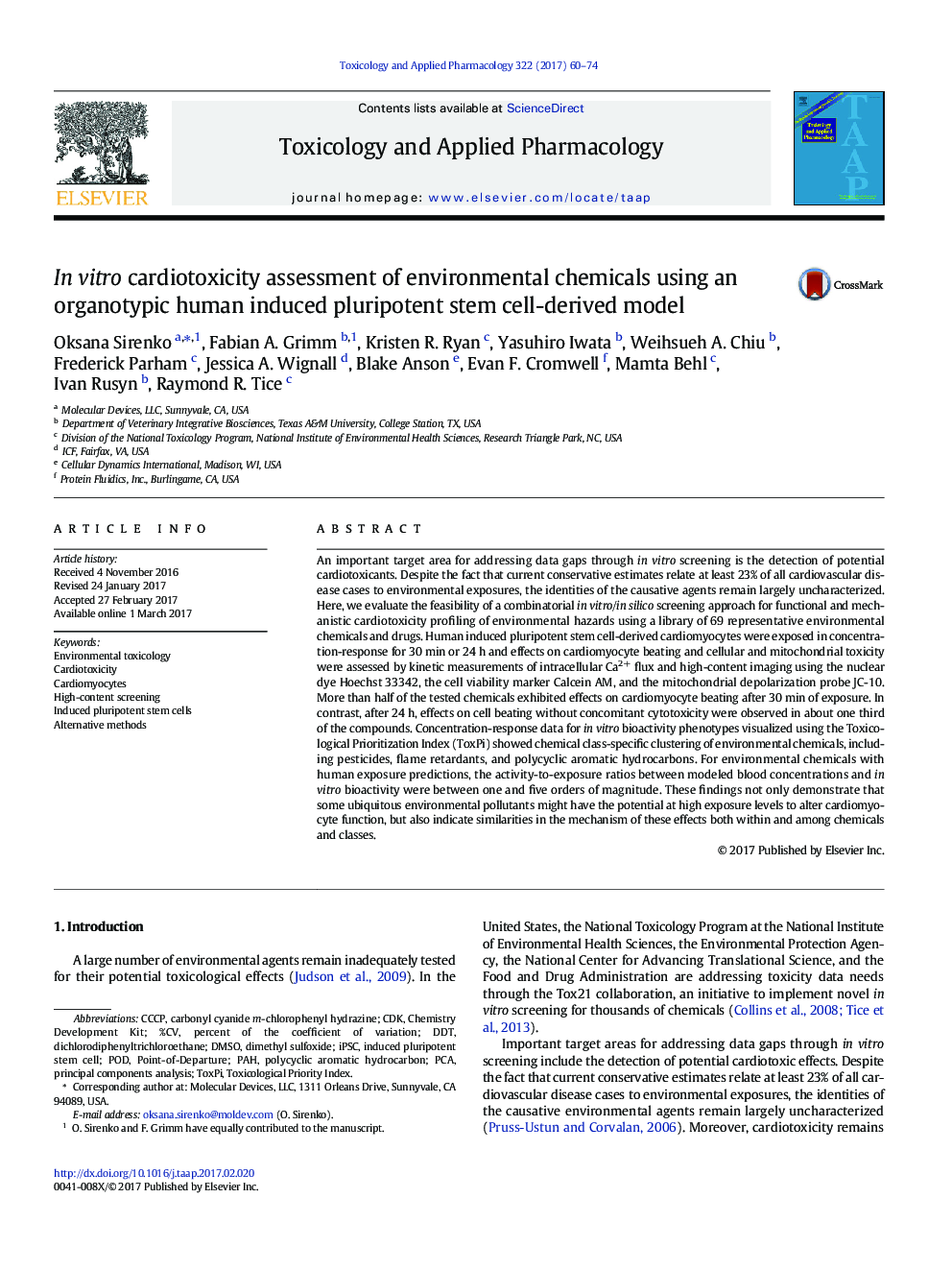| کد مقاله | کد نشریه | سال انتشار | مقاله انگلیسی | نسخه تمام متن |
|---|---|---|---|---|
| 5558322 | 1561140 | 2017 | 15 صفحه PDF | دانلود رایگان |
- The cardiotoxic potential of a broad range of environmental chemicals was evaluated.
- Human iPSC cardiomyocytes were used for multiparametric in vitro profiling.
- Dose-response relationships were established for functional and cytotoxicity assays.
- Computational data integration provided chemical-specific bioactivity profiles.
- An assessment of the profiles revealed chemical class-specific similarities.
An important target area for addressing data gaps through in vitro screening is the detection of potential cardiotoxicants. Despite the fact that current conservative estimates relate at least 23% of all cardiovascular disease cases to environmental exposures, the identities of the causative agents remain largely uncharacterized. Here, we evaluate the feasibility of a combinatorial in vitro/in silico screening approach for functional and mechanistic cardiotoxicity profiling of environmental hazards using a library of 69 representative environmental chemicals and drugs. Human induced pluripotent stem cell-derived cardiomyocytes were exposed in concentration-response for 30Â min or 24Â h and effects on cardiomyocyte beating and cellular and mitochondrial toxicity were assessed by kinetic measurements of intracellular Ca2+ flux and high-content imaging using the nuclear dye Hoechst 33342, the cell viability marker Calcein AM, and the mitochondrial depolarization probe JC-10. More than half of the tested chemicals exhibited effects on cardiomyocyte beating after 30Â min of exposure. In contrast, after 24Â h, effects on cell beating without concomitant cytotoxicity were observed in about one third of the compounds. Concentration-response data for in vitro bioactivity phenotypes visualized using the Toxicological Prioritization Index (ToxPi) showed chemical class-specific clustering of environmental chemicals, including pesticides, flame retardants, and polycyclic aromatic hydrocarbons. For environmental chemicals with human exposure predictions, the activity-to-exposure ratios between modeled blood concentrations and in vitro bioactivity were between one and five orders of magnitude. These findings not only demonstrate that some ubiquitous environmental pollutants might have the potential at high exposure levels to alter cardiomyocyte function, but also indicate similarities in the mechanism of these effects both within and among chemicals and classes.
Journal: Toxicology and Applied Pharmacology - Volume 322, 1 May 2017, Pages 60-74
